“Tell me, O muse, of that ingenious hero who traveled far and wide”…and invented wine?! ~Homer, The Odyssey
Although it was no epic journey created by some lucrative poet or as ostentatious as the adventure of Odysseus, the birth of wine has a remarkable yet humble beginning in the land of the East. The original makers of godly nectar were modest geniuses who used rice as their base. The end result of this concoction, after lots of waiting, became an intoxicating clear liquid capable of bringing one closer to the spiritual realm of the gods. Sake had been born and was the first “wine” to be created. The adventure only begins here. Fast forward a few centuries and go slightly to the west in your time travel plans and you will end up in Georgia, circa 7400 BC.
When society thinks of wine, the first thing that might come to mind is either grape juice gone wrong in an old wood barrel, or an artistic creation of taste, sight and smell. Not everyone likes wine but for those who seek out its comfort and beauty for their regular dinner parties ,or a night on the patio in solitude, wine is the “go to” for palettes far and wide. It’s been a popular beverage for hundreds of centuries and is still holding strong. In the country of Georgia, archeologists found old jars with residue of grape based beverages containing spices and other fermented berry juices in it. To this day, Georgia’s vineyards are considered the prime spot for growing grapes and making extraordinary wines. The cool climate, the moisture, and the rocky yet seductively rich and dark soil, give grape vines a luxurious bed to wrap their roots around. A happy grape makes happy wine which makes even happier people.
I myself work for a vineyard based in Muskogee, Oklahoma called Pecan Creek Winery. I know, right? Not the first place you think you would find an award wining vineyard. However, the balance between climate, soil, and creative knowledge can produce amazing wines if one knows how to utilize the best of what they have, and be innovative with the things they don’t. True Oklahoma has blistering summers, frigid winters, troublesome tornados in the spring and bipolar falls that can’t decide if its still summer or winter yet. We have no autumn really, well maybe two or three weeks that tease us, but that’s about it. Our soil isn’t much better unless you want to grow weeds. The red dirt clay and sand stone make any plant want to pick itself up by the root straps and run for high water. However, vintners in Oklahoma have learned to utilize what little moisture they have and grow tough hybrids that can withstand such set backs, along with imparting the tastes you would expect from a friendlier climate wine. From the oak barrels to the grapes growing in the vineyard, the extra attention to detail and labor makes it possible to bottle beautiful wines. Of course those details from daily life in the vineyard will come at a later time from yours truly.
(Vignoles being Harvested at Pecan Creek)
Georgian wines are usually semi sweet reds and whites, and rightly so, due to the cuisine that is so engrained into the culture. Copious amounts of wine are always served at the family table or large group gatherings such as supra. Heavy on their meat dishes, Georgian food is full of different spices you would find in Indian and Middle Eastern cuisine, yet has a rugged robustness to it commonly found in Russian home cooking. Semi sweet wines such as Vouvray and Riesling make a lovely companion to these dishes. Coriander, dill, bay leaf, basil, thyme, mint, hot pepper, safflower/saffron, parsley, marjoram, and fenugreek are just a pinch of what spices are commonly used. Wine has a personality that must fit with the dish, and slightly sweet and mellow wines pair well with spicy and bold dishes. They don’t clash for center stage on the pallet and bring out the best in each other.
One of the past times I enjoy doing is creative “iron chef-like” challenges and pairing wines with the meals that come from such challenges. My friend gives me two regularly paired ingredients and one random, and sometimes other worldly, ingredient to use in the dish I make from scratch. For a nod to the Georgian cuisine and cultural influences made on them, I was given the ingredients of pork, sage and tea. Ironically, tea was imported from China to Georgia and became another important beverage in the culture brought from the east. Also, using tea as a brine helps to tenderize meats, which comes in handy using T-bone pork chops. Of course we paired a lovely Washington Riesling, Kung Fu Girl, and a Demi- Sec Vouvray, Chateau Moncontour 2012. Both offer a cool, refreshing sweetness to off set the spices of the Georgian dishes but the Vouvray won this food pairing romance. The delicate floral nose, honey drizzled pear on the pallet and almond finish were subtle enough to let the Darjeeling tea and spices take the stage, yet alluring enough to seduce us into craving another sip. It was the harmony to this melodious dish.
Each wine and region those wines are birthed in have a story to tell. The soil it digs into, the sunlight it reaches for, the water it laps up, and the attentive care of the vintner’s hands all play a part in the taste, or story, of the wine. Every year is different for the grapes, just like every year we humans come across success and failure. Rot, natural disasters and pests are many of the trials the vintner and the grapes trudge through together. However, the good years of perfect sunlight, light rain showers and calm weather produce bountiful fields and happy grapes. It shows in the wine, through its taste and yield amount. The connection between wine and humans has persevered though the centuries and the impact it has made on cultures will continue to grow as long as there is a love for wine, food and happiness.
Darjeeling Pork Chops
Prep Time: 45 minutes (includes refrigeration)
Cook time: 45 minutes
Total time: 1 hr 30 minutes
Serves: 6 servings
Ingredients:
6 T-bone Pork Chops
2 c baby carrots, halved
1 large Vidalia onion, sliced
2 cloves minced garlic
1 c chicken broth
1 ½ tablespoon dried sage
½ tablespoon ground coriander
1 ½ teaspoon white pepper
4 tablespoons salted butter, divided
½ tablespoon dried parsley
2 bay leaves
1 c fresh kale, chopped Salt and black pepper, to taste Brine
3 c Darjeeling tea
1 tablespoon salt
3 tablespoon sugar
Instructions:
1. Make brine with 3 c. Darjeeling Tea that has been steeped and cooled to room temperature, salt, and sugar. Mix well in a large bowl.
2. Place pork chops in large container. Poor brine over chops. Cover and refrigerate for 30 minutes or overnight.
3. Combine chicken broth, sage, coriander, and white pepper in a bowl. Set aside.
4. Take the pork chops out of the refrigerator. Discard brine. Heat oven to 375° F.
5. Place a large skillet over medium-high heat with 1 tablespoon butter. Add pork chops to skillet and cook until both sides are slightly brown, about 3 minutes on each side.
6. Place browned chops in 9 x 12 glass baking dish. Submerge pork chops in broth and spice mixture. Place carrots, onion, and garlic over pork chops. Add butter, parsley and bay leaves. Cover the baking dish in foil. 7. Bake pork chops and vegetables for 25-30 minutes, or until pork chops are tender and have reached an internal temperature of 145°.
8. Uncover pork chops and add kale. Bake for another 10 minutes or until kale has slightly wilted. Add salt and pepper to taste. Serve with rice or potatoes.
References:
http://www.scientificamerican.com/article/the-orig...
archaeology.about.com/od/Domesticated-Plants/fl/Vitis-vinifera-The-Origins-of-the-Domesticated-Grape.htm




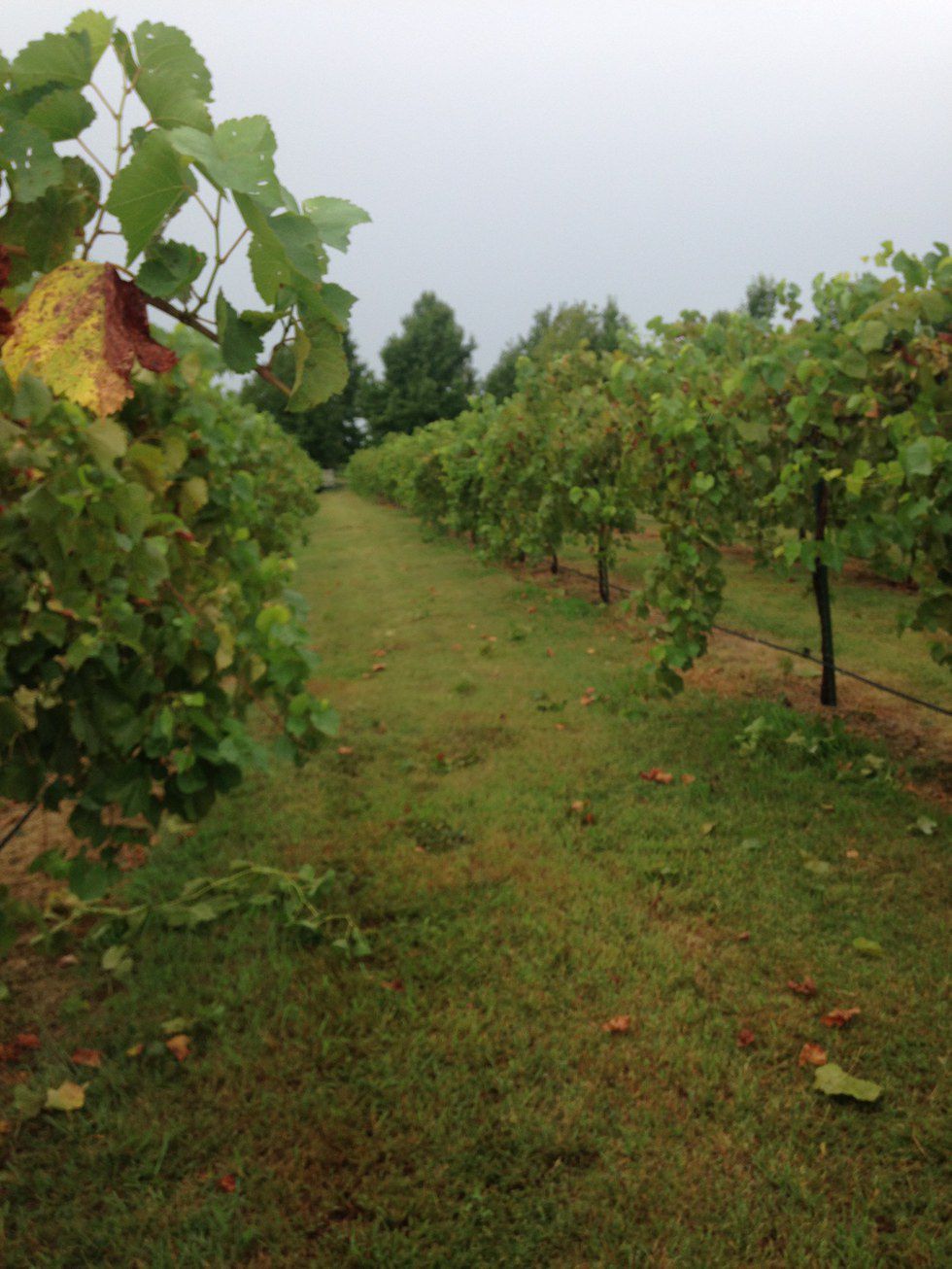
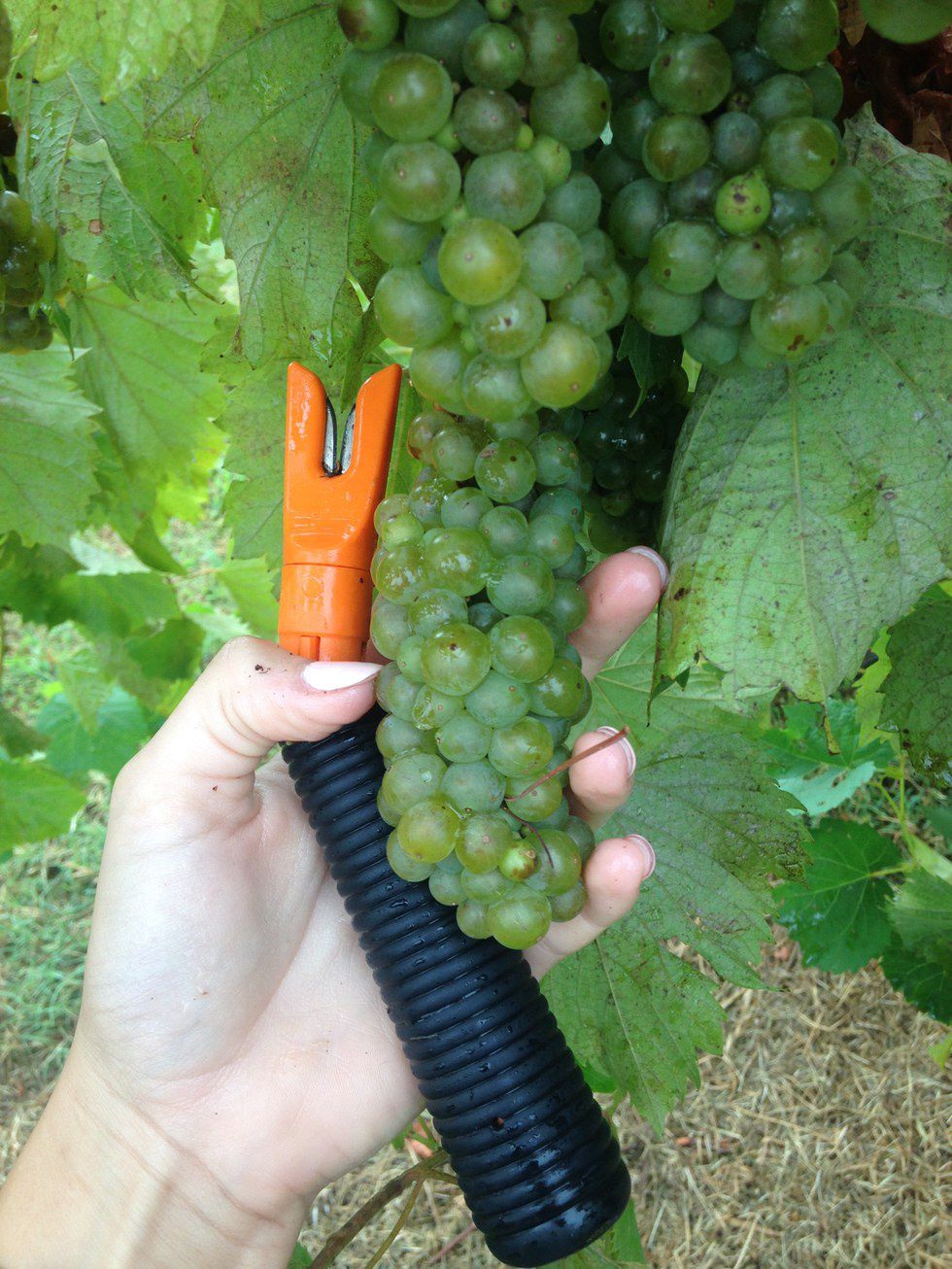
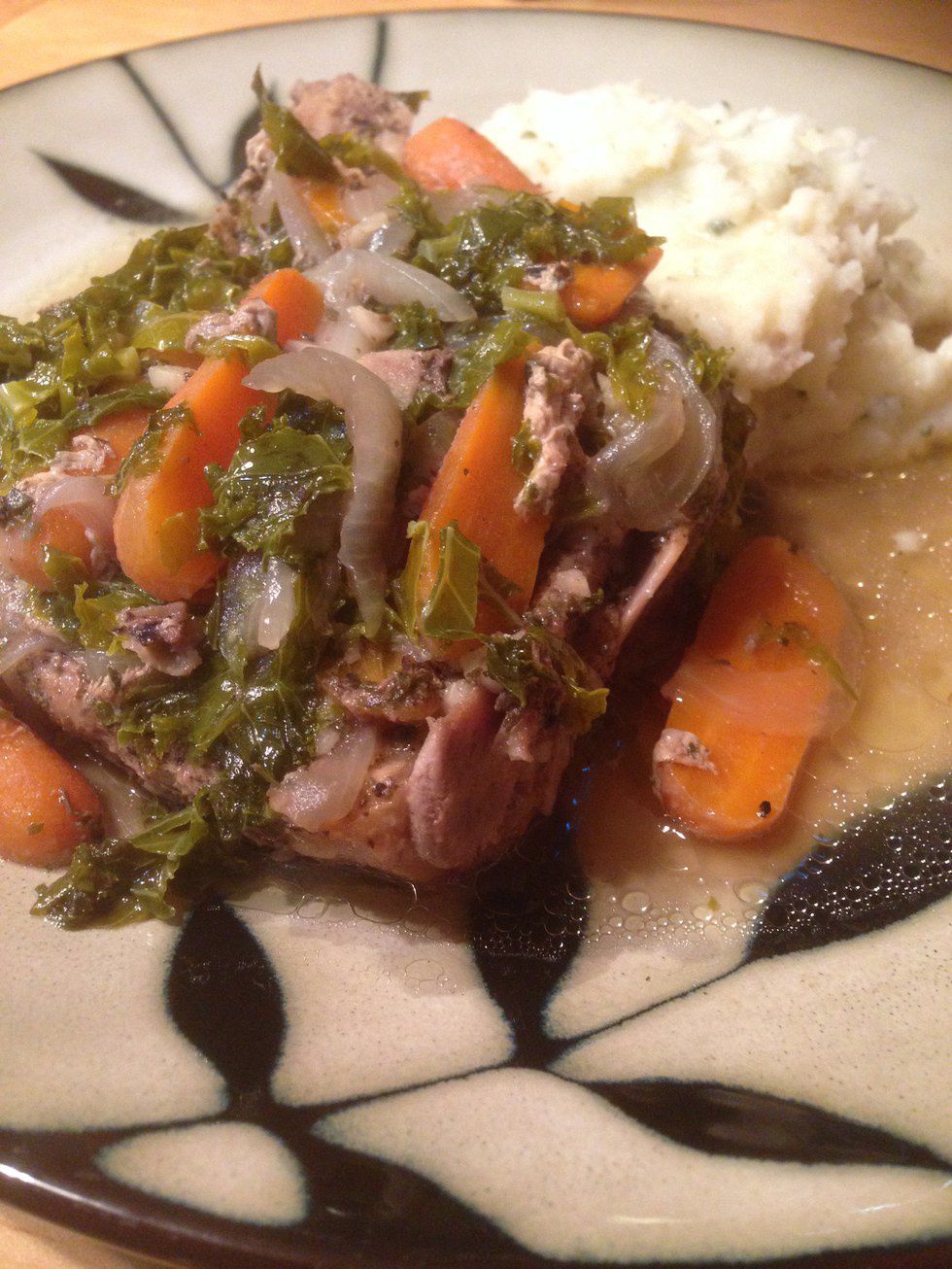
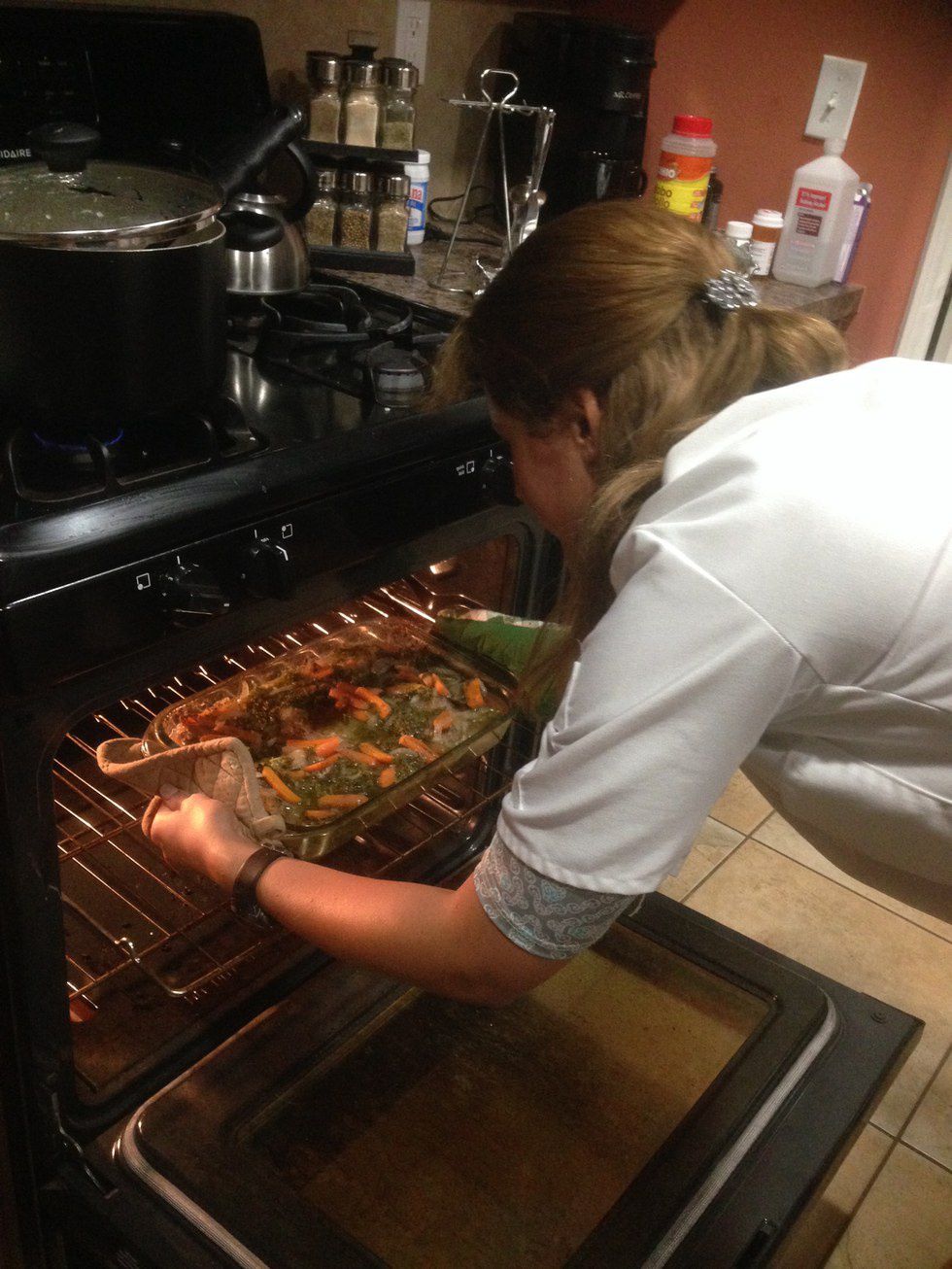
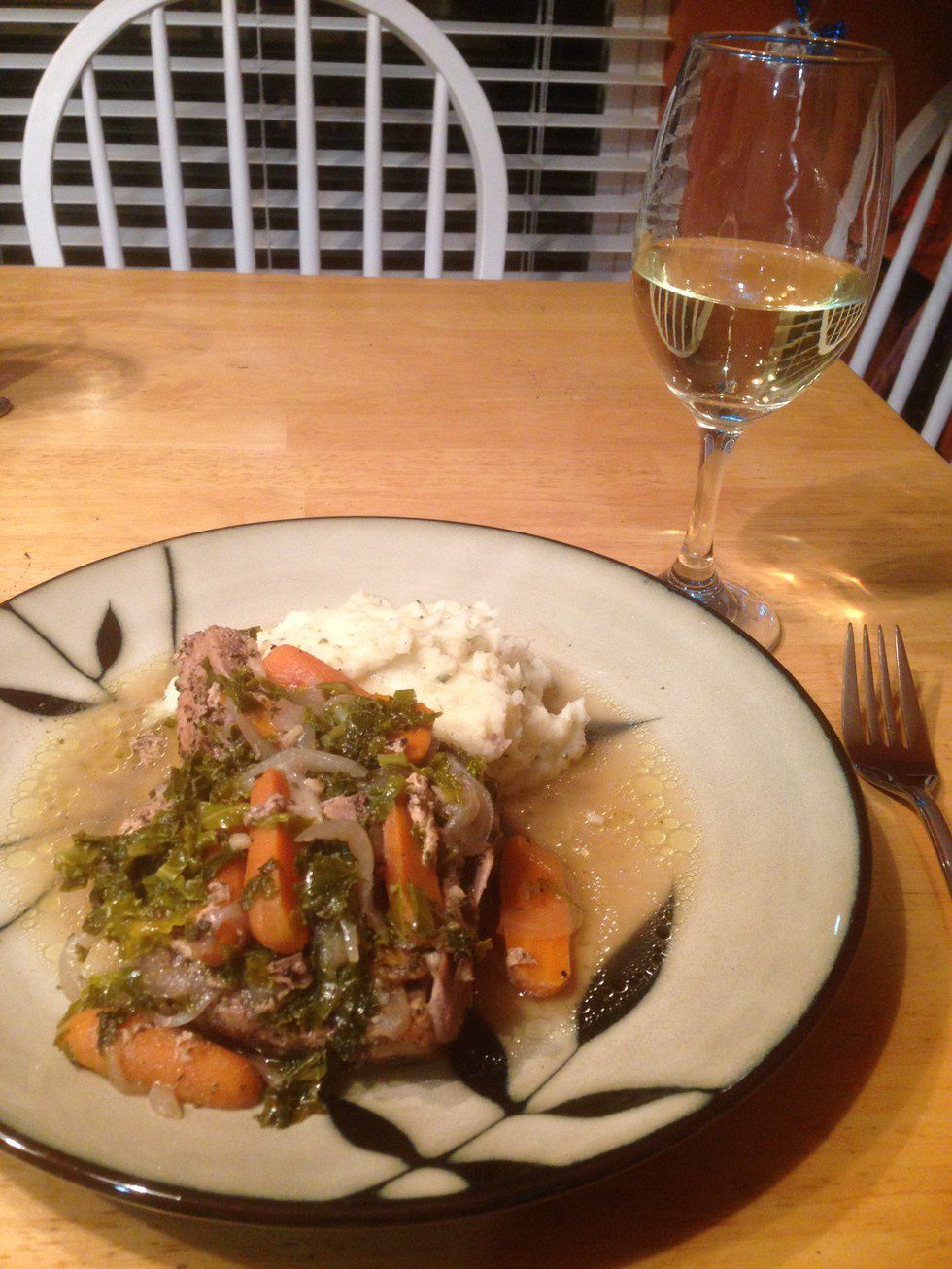

 Photo by
Photo by  Photo by
Photo by  Photo by
Photo by 



















